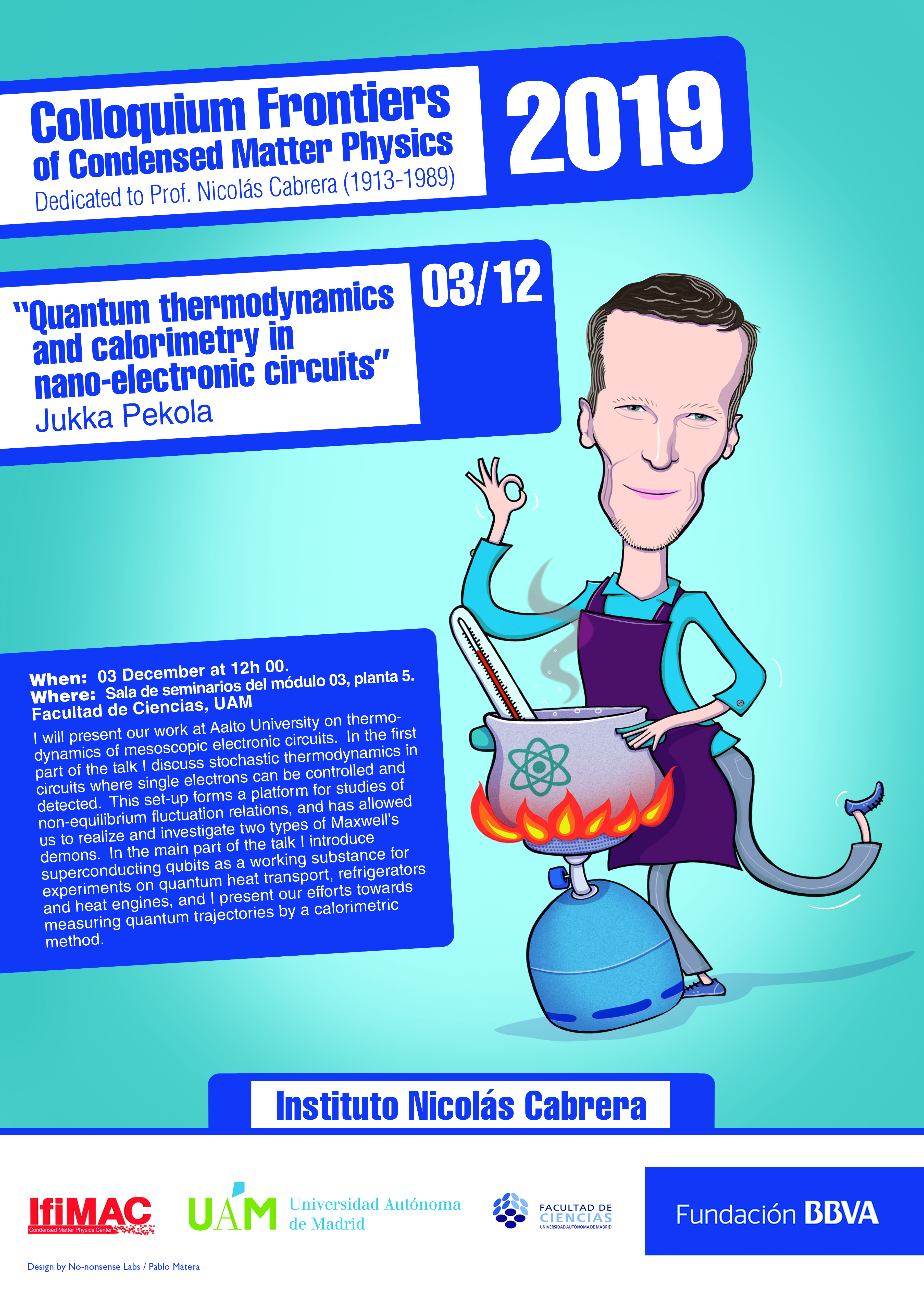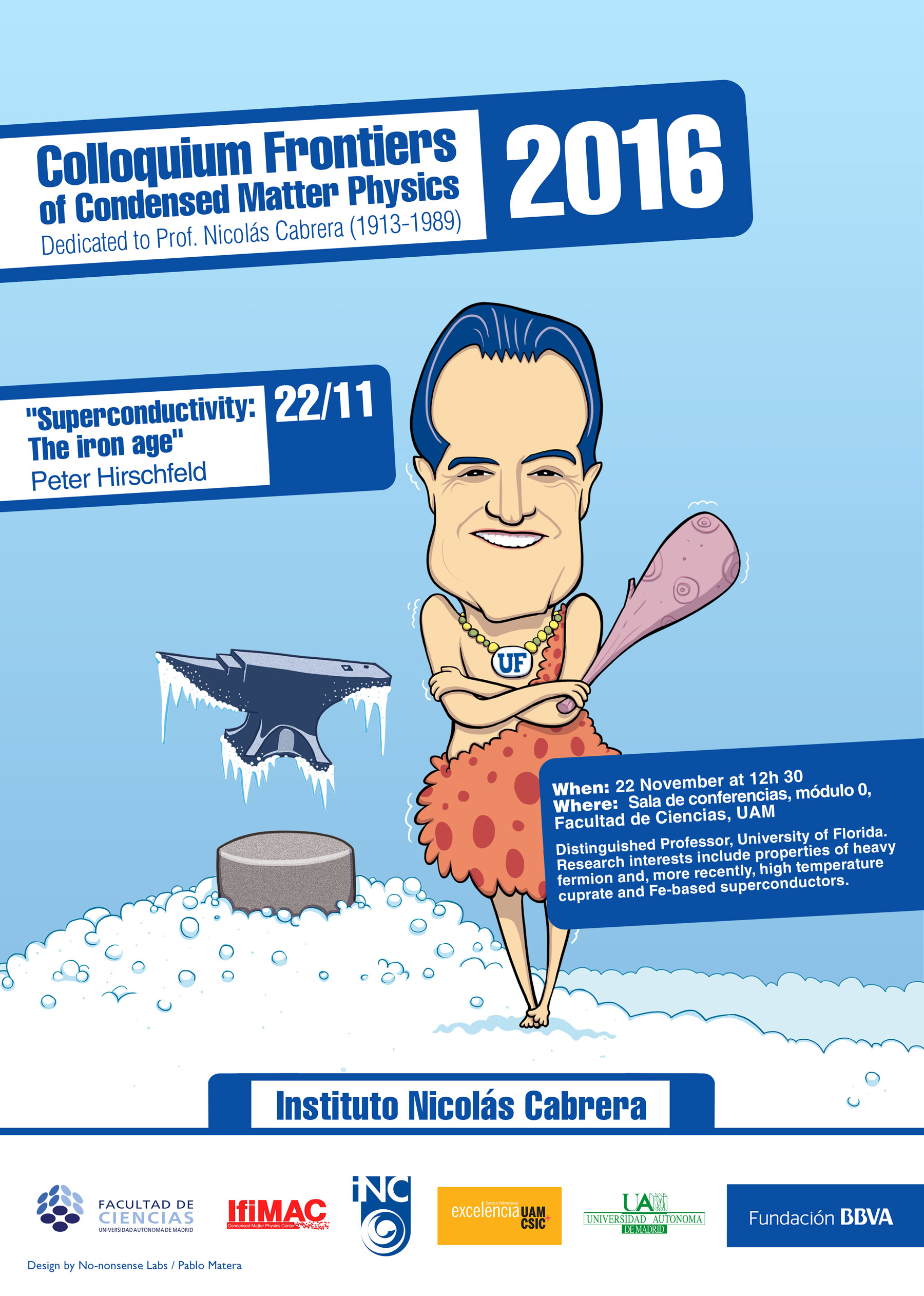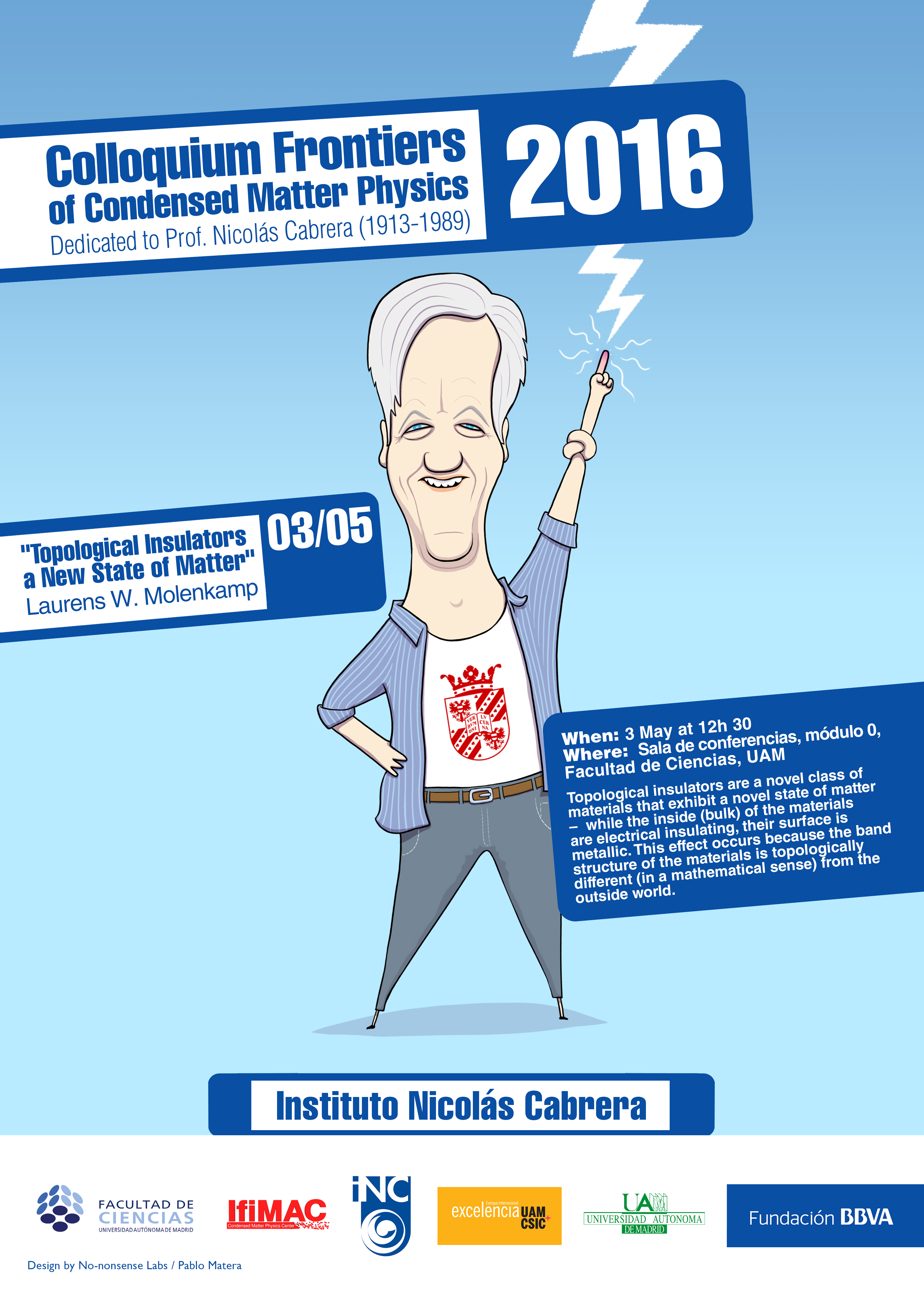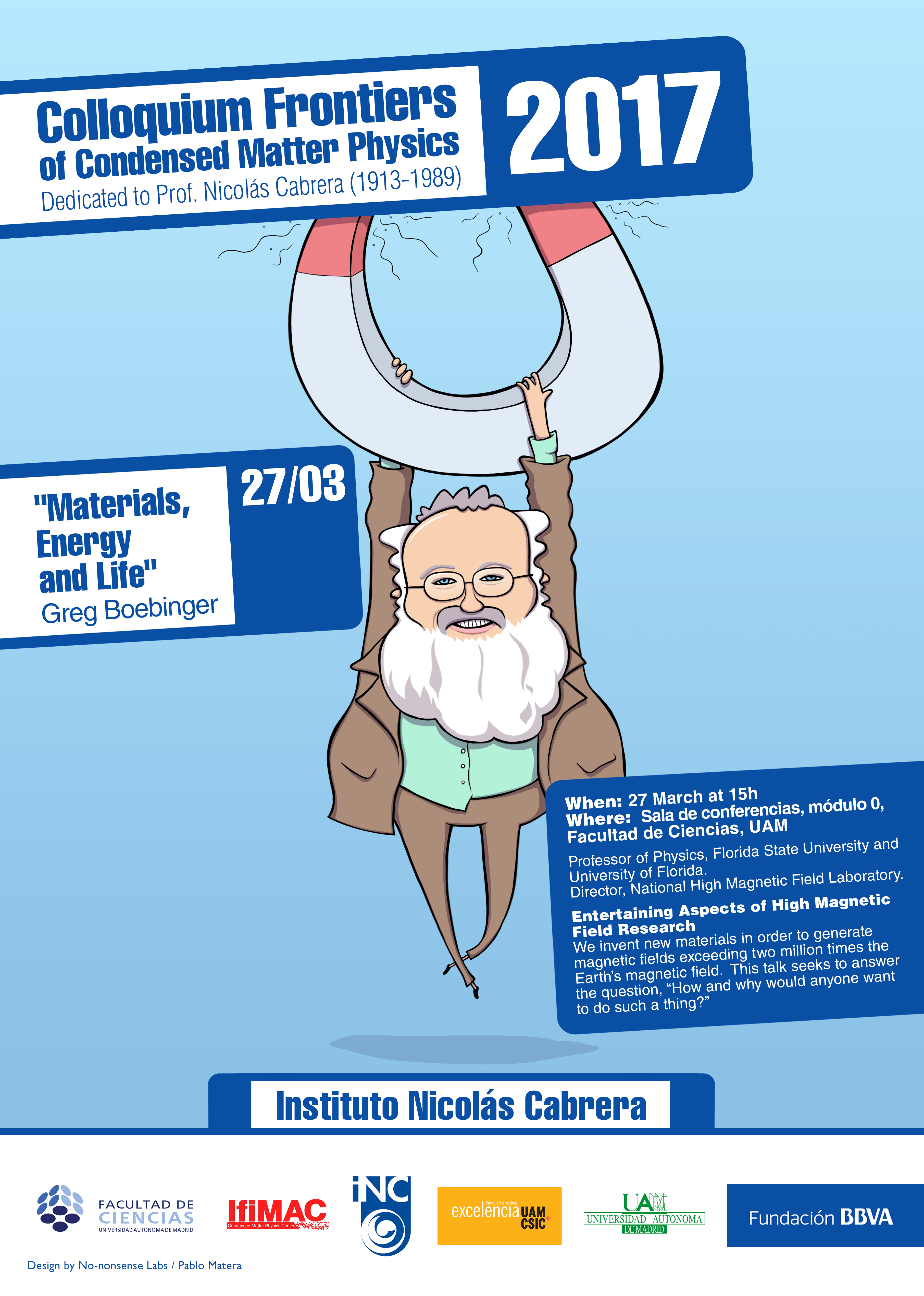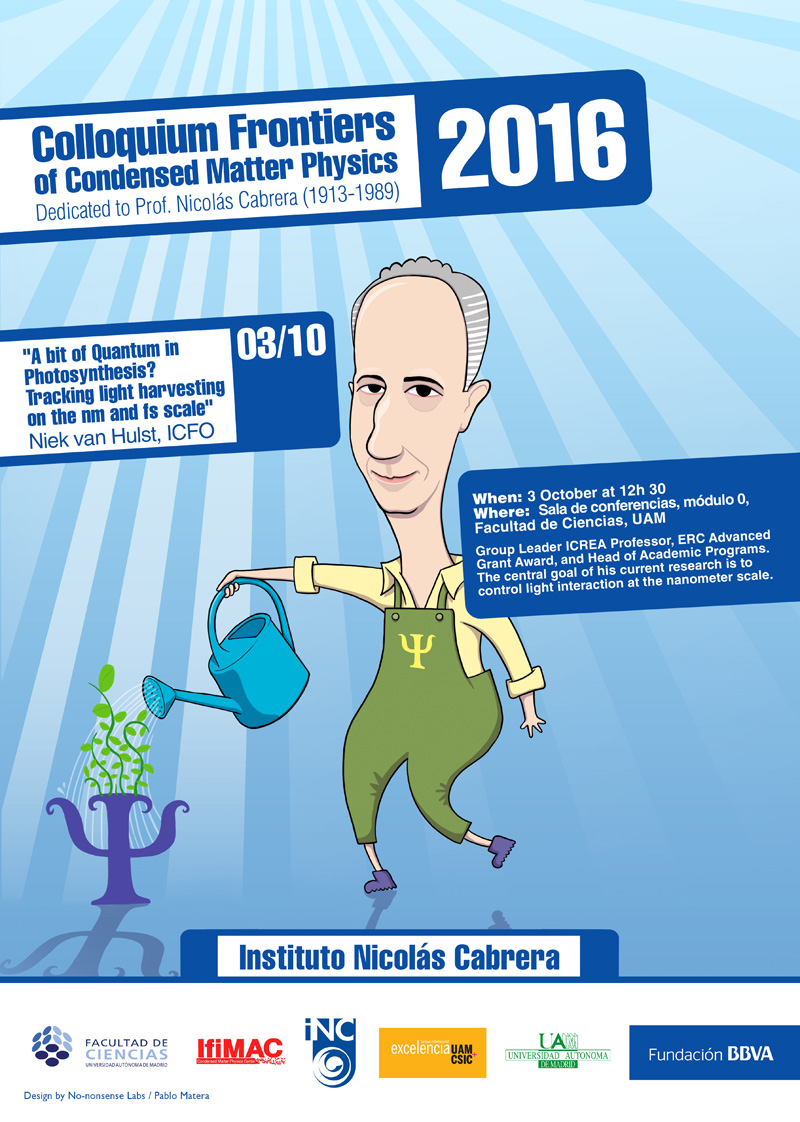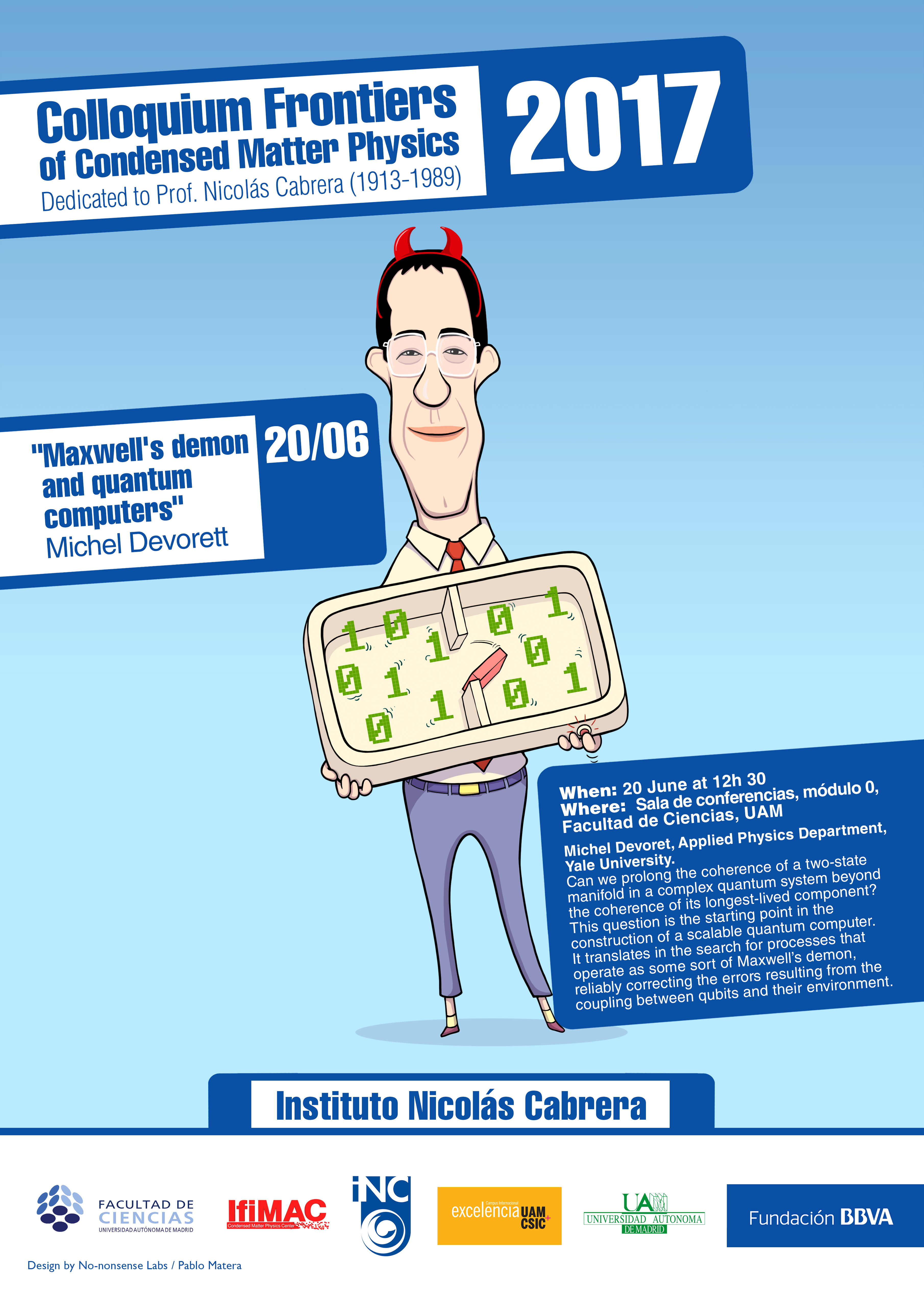Colloquium: “Frontiers in Condensed Matter Physics” 2014
Title: Electronic liquid crystals
When: Tuesday 04 November, 12h30
Where: Sala de conferencias módulo 00, Facultad de Ciencias.
Speaker: A. P. Mackenzie, Max Planck Institute for Chemical Physics of Solids
Abstract: A major development in condensed matter physics over the past twenty years has been the study of collective electronic states that organise into symmetry-lowered configurations similar to those seen in liquid crystals. Empirically, these are often seen in the vicinity of unconventional superconductivity, further heightening interest in the topic. In this talk I will give a kind of ‘progress report’ on where things stand. I will emphasise that although we know much more about these states than we used to, the key outstanding questions are sufficiently important that this will remain a central field of research for the foreseeable future.

Title: How mesoscopic superconductivity is changing astronomical observation
When: Monday 06 october, 12h00
Where: Sala de seminarios módulo 03, planta 5, Facultad de Ciencias.
Speaker: T.M. Klapwijk, Kavli Institute of Nanoscience, Delft University of Technology
Abstract: Superconductivity is a very rich and intriguing phenomenon, which continues to pose challenging questions in condensed matter physics. Although it is over 100 years old its range of applications is limited. The most well-known are the superconducting wires, which are used for powerful cooled magnets for science experiments and MRI. Another branch is formed by superconducting electronics of which quantum computation is currently a very promising research-area, and which relies heavily on nanotechnology. A less widely known application with high impact is in astronomical instruments. I will discuss how superconductivity has served astrochemistry through the Herschel Space Telescope, and continue to do through the Atacama Large Millimeter Array. In addition I will discuss how superconducting resonators are evolving towards a multi-pixel camera in the THz range and to an on-chip spectrometer, both for astronomical observations.

Title: Particle Physics on a Chip: The Search for Majorana Fermions.
When: Thursday, 29 May, 12h00
Where: Sala de conferencias módulo 0, Facultad de Ciencias.
Speaker: Leo Kouwenhoven, Delft Univ. of Technology
Abstract: Majorana fermions were predicted in 1937 by Ettore Majorana in Rome. These are particles with the mysterious property that they are equal to their antiparticles. This defining property immediately implies that these “Majoranas” have zero charge and zero energy. Ongoing searches for detecting Majoranas occur in the context of high-energy physics and dark matter, but yet without success. Simultaneously, condensed matter theorists proposed specially designed electronics that can host Majoranas. This insight led to a successful experiment that has the signature of a Majorana, potentially the key to developing a quantum computer.
Title: A Chance to Grow: Design, discovery, growth and characterization of novel compounds
Speaker: Paul C. Canfield, Distinguished Professor, Liberal Arts & Sciences and the Robert Allen Wright Chair in Physics, Senior Physicist, Ames Laboratory, Iowa State University
Where: Sala de conferencias módulo 00, Facultad de Ciencias.
When: Monday 17 march, 12h30
A Chance to Grow: Design, discovery, growth and characterization of novel compounds
Abstract: The design, discovery, characterization and control of novel materials is perhaps the most important research area for humanity as it moves into the 21rst century. A myriad of societal problems concerning energy, clean water and air, and medicine all need to be solved by the discovery of new compounds with dramatically improved, or even new, properties. The search for such materials requires a blending of skills and mind sets that, traditionally, have been segregated into different academic disciplines: physics, chemistry, metallurgy, materials science.
In this colloquium I will outline the basic philosophy and techniques that we use to search for novel materials. These include a combination of intuition, experience, compulsive optimism and a desire to share discovery. In the second half of the lecture, the specific case of superconductivity will be used as an example of one such search. Over the past couple of decades a growing sense of where and even how to search for new superconductors has been developing, with the recent discovery of the FeAs based materials providing, at least for me, clear guidance.

Title: A Chance to Grow: Design, discovery, growth and characterization of novel compounds
Speaker: Paul C. Canfield, Distinguished Professor, Liberal Arts & Sciences and the Robert Allen Wright Chair in Physics, Senior Physicist, Ames Laboratory, Iowa State University
Where: Sala de conferencias módulo 00, Facultad de Ciencias.
When: Monday 17 march, 12h30
A Chance to Grow: Design, discovery, growth and characterization of novel compounds
Abstract: The design, discovery, characterization and control of novel materials is perhaps the most important research area for humanity as it moves into the 21rst century. A myriad of societal problems concerning energy, clean water and air, and medicine all need to be solved by the discovery of new compounds with dramatically improved, or even new, properties. The search for such materials requires a blending of skills and mind sets that, traditionally, have been segregated into different academic disciplines: physics, chemistry, metallurgy, materials science.
In this colloquium I will outline the basic philosophy and techniques that we use to search for novel materials. These include a combination of intuition, experience, compulsive optimism and a desire to share discovery. In the second half of the lecture, the specific case of superconductivity will be used as an example of one such search. Over the past couple of decades a growing sense of where and even how to search for new superconductors has been developing, with the recent discovery of the FeAs based materials providing, at least for me, clear guidance.



